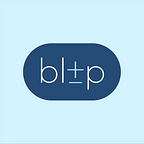November 9, 2020
Dennis Kontorovich
If you read our previous post, you already know that electricity is pretty complicated and our grid is truly incredible. Utilities are responsible for balancing the supply and demand of electricity for all of the customers they serve. And you’ll know that this is an incredibly difficult thing to do because electricity has to be used as soon as it’s produced, as it can’t be stored at scale. Demand must be met, failure is not an option, if a light switch gets flipped, the lights better come on. Utilities have struggled with these challenges since their birth and will continue fighting to maintain balance for the foreseeable future.
However, as our grid has gotten more advanced and technology has developed, options for utilities to impact not only electricity supply, but also it’s demand have emerged. To simplify further, think about it like this, traditionally, utilities were unable to stop you from turning on your lights or your TV. While this is still the case, new technology, like smart-thermostats, have actually presented utilities with a way to curb your energy demand.
Hence, the birth of Demand Response (DR), a way to change consumer consumption to better match the demand for power with available supply. Now you’re probably wondering how your smart-thermostat can do this, “doesn’t it just change the temperature in my house in order to save me money?” you may ask. Well, in many regions around the country, smart thermostats can be registered for Demand Response programs. If a smart thermostat is registered, the utility agrees to pay the homeowner some kind of fee (monthly, by use, etc.) in exchange for the right to decrease the energy usage in the homeowner’s residence (by turning off/down the A/C by a few degrees for a few hours). The utility wants this right because when a lot of people are using energy at the same time, it can become very difficult, and extremely expensive, to supply all the required electricity. In most cases this looks like an increase from 70 degrees to 74 degrees for two to four hours, and it only occurs a handful of times throughout the year. People sign up for this because they get bill credits and the change really doesn’t negatively impact their quality of life, so it seems like free money. Many people don’t even notice when a “Demand Response Event” is called.
The benefits of Demand Response for utilities are clear: it reduces their use of exorbitantly expensive electricity and helps stabilize the grid to limit blackouts. Additionally, by curbing peak demand, utilities can shut down dirty, carbon intensive peaker plants, resulting in cleaner air in local communities and a smaller carbon footprint. Finally, having more control of customer demand makes it easier for utilities to plan their supply (generation mix), meaning they can have the confidence to more rapidly shift to renewable sources of energy.
The benefits to customers, while less impactful, are also clear: they get bill savings and, hopefully, fewer major power disruptions. While the bill savings will appear in the near term, with large scale DR adoption, renters should see their overall energy bills go down over time because utilities no longer have to invest in keeping peaker plants available.
So, given all of these seemingly obvious benefits, why aren’t Demand Response programs more heavily used by utilities and ratepayers? The main reason is that they aren’t 100% reliable. What I mean by this is that utilities need 100% certainty that they can lower demand by an established amount when they need to; current programs, while pretty good, can’t guarantee this decrease because a customer can opt-out of a DR event (if, for example, they’re having a party in the summer and don’t want their A/C turned up). For DR programs that don’t rely on smart-thermostats, but rather rely on simply requesting customers use less power at certain time (i.e. customers can turn off their lights or run their dishwasher at a later time, etc.), it’s very hard to guarantee that the necessary number of customers will listen to the utilities request to curb their demand, even if there is a monetary incentive. All of this uncertainty has put a damper on DR, limiting the expansion of these programs and by extension the benefits they provide to both utilities and ratepayers.
If you’re wondering why blip, a residential energy storage company, is concerned with DR, let us take a moment to explain. blip works by taking power from the grid when it’s cheap (usually tied to low demand times) and powering energy dense appliances when it’s expensive (during high demand times). This means that when blip begins powering your appliances, it “islands” from the grid, meaning your appliance stops drawing power from the grid and starts drawing it from our internal batteries. In this situation, your appliance, let’s call it a window A/C unit, is still working exactly how it was before, keeping you cool and comfortable, BUT to the utility, it looks like the A/C is turned off because it is no longer taking energy from the grid. By simply turning on and islanding, blip serves the goals of a DR event because it reduces the total energy demanded from the grid. The benefit of blip over other DR devices, like smart-thermostats, is that there is no negative impact to the users quality of life (forced A/C shut offs), yet all the benefits (bill credits for users and curbed demand for utilities) are still present.
With blip, we hope to take Demand Response to the next level, saving customers money and cleaning up our grid as we go.
If you have any questions or wish to inquire further about blip, please contact Hello@blipenergy.com.
